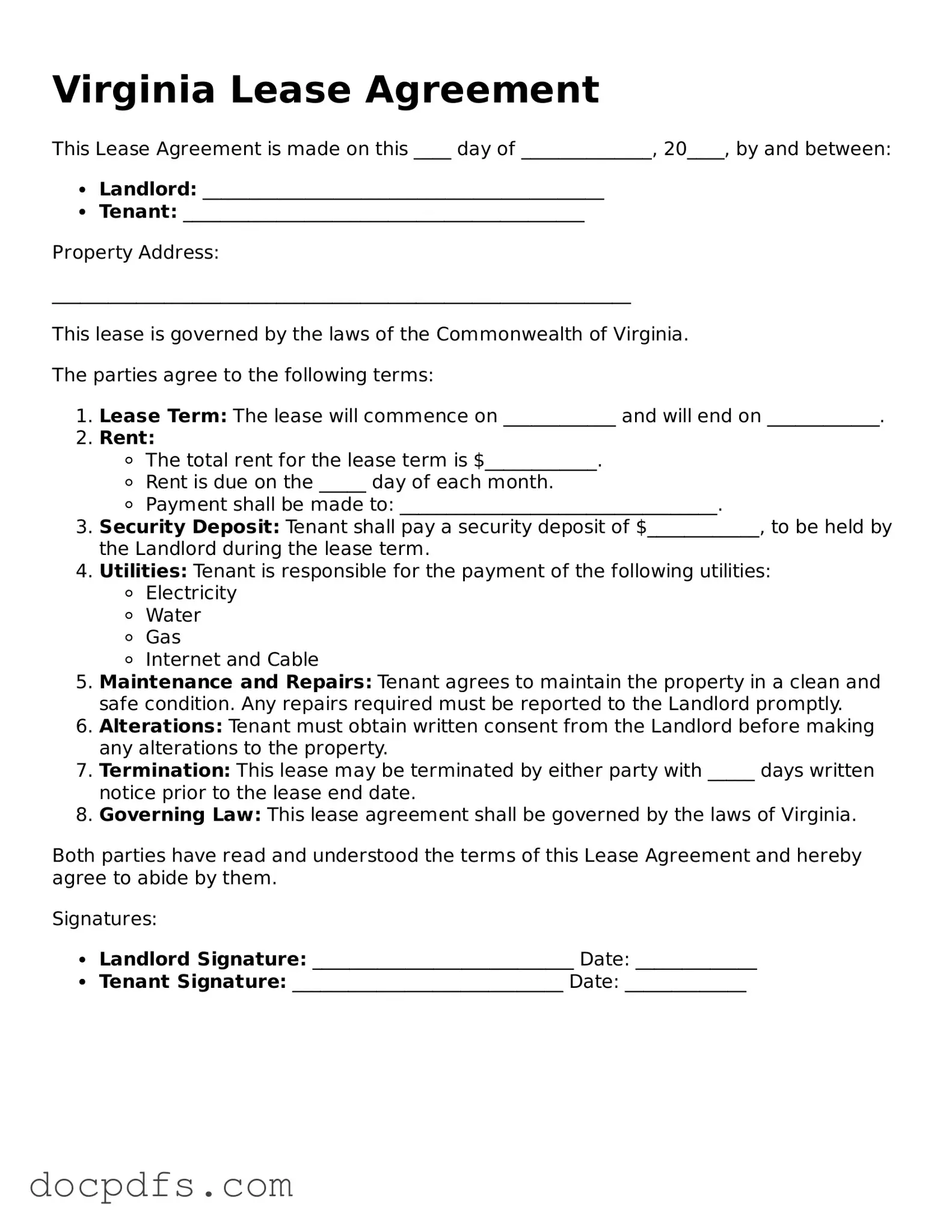What is a Virginia Lease Agreement?
A Virginia Lease Agreement is a legal document that outlines the terms and conditions between a landlord and a tenant for renting a residential property in Virginia. This agreement specifies the rights and responsibilities of both parties, ensuring a clear understanding of the rental arrangement.
What should be included in a Virginia Lease Agreement?
A comprehensive Virginia Lease Agreement should include the following key components:
-
Names of the landlord and tenant
-
Property address
-
Lease term (start and end dates)
-
Rent amount and payment schedule
-
Security deposit details
-
Maintenance responsibilities
-
Rules regarding pets and smoking
-
Termination conditions
How long does a Virginia Lease Agreement typically last?
Lease agreements in Virginia can vary in length. They are often set for a fixed term, such as one year, but they can also be month-to-month. The duration should be clearly stated in the agreement.
Can a Virginia Lease Agreement be modified?
Yes, a Virginia Lease Agreement can be modified, but both parties must agree to any changes. It’s best to document any modifications in writing and have both parties sign the updated agreement to avoid confusion later.
What happens if a tenant fails to pay rent?
If a tenant fails to pay rent on time, the landlord may issue a notice to the tenant. This notice typically provides a grace period for payment. If the rent remains unpaid, the landlord may initiate eviction proceedings according to Virginia law.
Is a security deposit required in Virginia?
While not legally required, many landlords in Virginia ask for a security deposit. This deposit protects the landlord against potential damages or unpaid rent. Virginia law limits the amount a landlord can charge to two months' rent for a security deposit.
What rights do tenants have under a Virginia Lease Agreement?
Tenants in Virginia have several important rights, including:
-
The right to a habitable living space
-
The right to privacy
-
The right to receive proper notice before eviction
-
The right to have their security deposit returned in a timely manner
Can a landlord enter the rental property without permission?
In Virginia, landlords generally must provide notice before entering a tenant's rental property. This notice should typically be given at least 24 hours in advance, except in emergencies. Respecting a tenant's privacy is essential.
